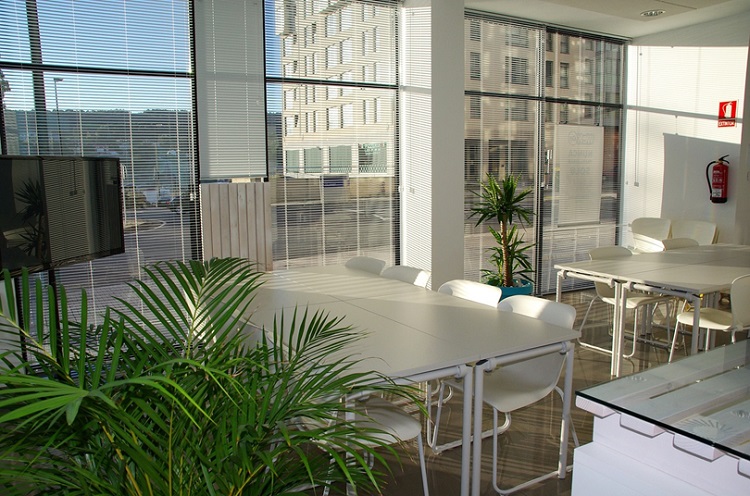Tips To Reduce Noise In Your Office Space

A noisy office environment can impact productivity and employee well-being. Employees can be distracted by noise, so employers must reduce the noise levels in the workplace to create a comfortable and efficient work environment. Here are some elements to add to an interior design for an office in Dubai, UAE, that will reduce noise pollution and enhance the overall office experience.
The major reason for high noise levels in offices could be the lack of physical barriers between employees. Implementing appropriate measures to reduce the noise levels, such as installing sound-absorbing materials like curtains, carpets, and acoustic ceiling tiles, can help create a non-disruptive environment. When aiming to reduce noise levels in an office environment, it is important that you understand the principle of acoustic elements in an interior design for an office in Dubai, UAE. These may include insulation, sound absorption, and diffusion.
- Sound insulation: Proper insulation can prevent sound from passing through ceilings, walls, and floors, significantly reducing the noise transfer between rooms and external sources. You can use high-quality insulation materials and construct partition walls with appropriate mass and density to achieve effective sound insulation.
- Sound absorption: This involves using materials that can absorb sound waves to prevent them from reflecting off surfaces and creating echoes. Sound-absorbing materials like acoustic panels, ceiling clouds, and baffles can reduce reverberation and improve overall acoustic quality in the office.
- Sound diffusion: The principle of sound diffusion involves scattering sound waves in various directions to reduce the impact of direct sound paths and improve acoustic comfort. Adding elements like irregular surfaces, curved walls, and diffusers to the office design will create a balanced sound environment and evenly distribute sound energy throughout the space.
- The office layout considerations also play a crucial role in reducing noise levels. This may include small adjustments like strategically arranging workstations and desks to minimize direct sound paths, grouping noisy equipment or functions in a designated area away from workplaces, and incorporating acoustic design principles into your office planning to create a comfortable and productive environment for your employees.
Go For Noise Reducing Materials
Ensure you select the right noise-reducing materials for your office environment to manage sound levels effectively.
- Insulation materials: Use high-quality insulation materials for ceilings, walls, and floors to prevent sound transmission between rooms from external sources. You may go for popular options like mineral wool, acoustic foam, or fiberglass, known for its sound-absorbing properties.
- Acoustic panels: These panels are designed to absorb sound and reduce reverberation in large spaces. Acoustic panels are available in different shapes, sizes, and materials and can be installed on walls, ceilings, or freestanding dividers. Some common choices for office environments include perforated wood panels, fabric-wrapped panels, and foam panels.
- Acoustic baffles: These are similar to acoustic panels but are typically suspended from the ceiling. These are highly beneficial for offices with open-plan or large spaces with high ceilings where wall-mounted panels may not be sufficient.
- Sound-absorbing flooring: This can be anything like modular carpet tiles, carpets, and acoustic underlay that can absorb sound and reduce the impact noise from foot traffic.
- Soundproof doors and windows: if you want to reduce sound leakage between rooms and from the outside, you can incorporate double or triple-glazed windows and install solid-core doors with appropriate seals.
Adding Sound-Absorbing Furniture And Other Decor Solutions
- Acoustic screens and partitions: desk-mounted or freestanding screens can help create separation between workspaces, reducing noise transfer and providing a sense of privacy. For open-plan offices, acoustic partitions made of sound-absorbing materials can be an effective solution.
- Modular workstations: these are flexible workstations that offer privacy as well as noise control while also adapting to the changing needs. Modular workstations with integrated acoustic panels or partitions can create barriers between employees, thus reducing noise transfer.
- Sound-absorbing furniture includes soft surfaces like upholstered sofas, chairs, and ottomans that can absorb sound and reduce the noise levels in an office. You can also add sound-absorbing storage units or cabinets to minimize reverberation.
- Acoustic artwork and wall hanging: certain decorative elements like acoustic artwork or wall hanging can reduce noise and add aesthetic appeal to your office. It can include fabric-wrapped panels or artwork with built-in acoustic properties.
- Carpets and rugs: Incorporating thick carpets or area rugs to absorb sound and reduce impact noise from foot traffic. Look for materials with good sound-absorbing properties, like rugs with thick padding or plush carpeting.
Final Thoughts
Reducing noise levels in your office is crucial for promoting productivity and employee well-being. Incorporating acoustic elements, implementing suitable furniture and decor solutions, and selecting appropriate noise-reducing materials can help to create a comfortable and efficient workplace. If you have an open office plan, you should adopt strategies that foster a quiet office culture through noise policies. This will help you enhance your work environment, thus leading to more focused and happier employees and, hence a thriving business.